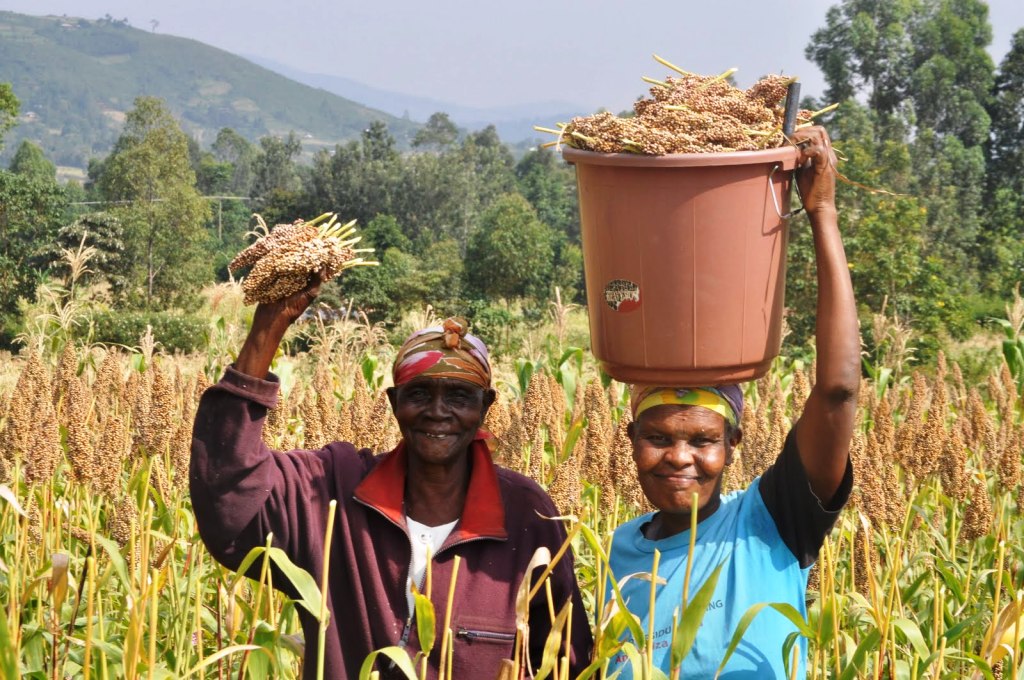Farmers who have just harvested sorghum in Nyanza region, Kenya. Apart from maize, Uganda is selling sorghum to Kenya. Photo by One Acre Fund.
Apart from the much talked about high maize cost, Uganda remains the main supplier of millet and sorghum to Kenya as the latter country recovers from the five-month long drought.
While Kenya imported 228.39 metric tons of sorghum from Uganda between May 29, 2017 and May 29, 2017, Rwanda took home only 10 metric tons from Uganda.
In millet importation from Uganda, Kenya brought in 59 metric tons in the five days while Rwanda took home 0.2 metric tons even as Tanzania bought nine metric tons.
In the five days under analysis, a 90kg bag of sorghum retailed at Sh8,032 in Nairobi followed by Burundi’s Bujumbura City at Sh7,185.
The wholesale price for the sorghum was Sh7,393 and Sh6,632 in Nairobi and Bujumbura respectively.
In Kampala, Uganda, the sorghum sold at Sh4,684 and Sh5,204 on whole sale and retail respectively.
In Dar es Salaam, the same quantity of the commodity traded at Sh5,874 and Sh7,133 in wholesale and retail respectively.
Rwanda’s Mulindi market was the lowest in the region, offering Sh4,453 in wholesale and Sh4,734 in retail.
Dar es salaam paid Sh10,489 for the same quantity of millet in retail while the wholesale price was Sh8,392. Mulindi was still the lowest, coming in with Sh5,918 and Sh6,087 in wholesale and retail respectively.
Uganda sold Millet at the second highest retail and wholesale price in the region despite supplying to her neighbours including DRC, South Sudan and the aforementioned.
On wholesale, millet fetched Sh9,107 and Sh8,327 on retail in Kampala.
The prices are courtesy of Regional Agricultural Trade Intelligence Network (RATIN).
READ ALSO: Kenyan traders resort to Uganda for cheaper maize
READ ALSO: Brewery wants sorghum and millet
READ ALSO: Sorghum value addition opens new frontiers for Kenyan farmers
The prices of agro-products have been rising since November 2016 as the prolonged drought scaled down production of crops from the last quarter of 2016 to the first quarter of 2017.
Kenyan consumers and traders have been buying cheaper dry maize from Uganda to mitigate the effects of the consistent shortage that has caused the rise of the cost of the product despite the recently announced government subsidy.
The price of fruits and vegetables remained high from December last year until March this year, when the rains set in. But Maize has remained high – three months after the rains because no harvest has been made.
A bag of 90kg maize in Kenya retails between Sh3,500 and Sh5,000 depending on the town, With Loitoktok being the lowest and Mombasa one of the highest.
The cost of this staple food for most Kenyans may remain expensive due to the invasion of fall army worm pests that are fast spreading through the country.

















Comments powered by CComment